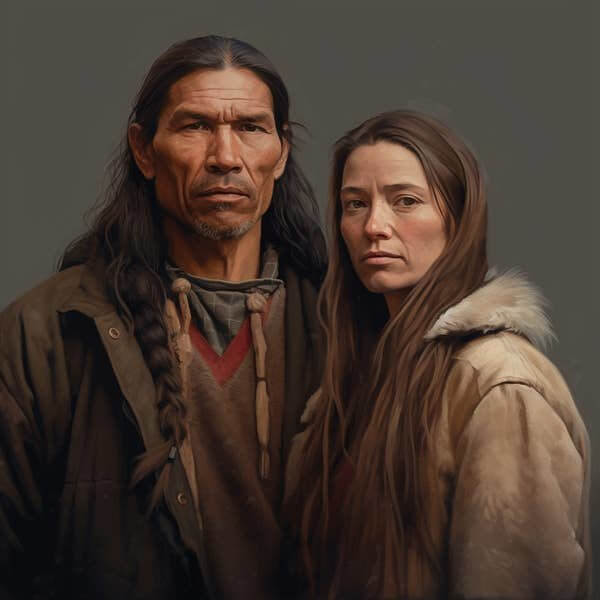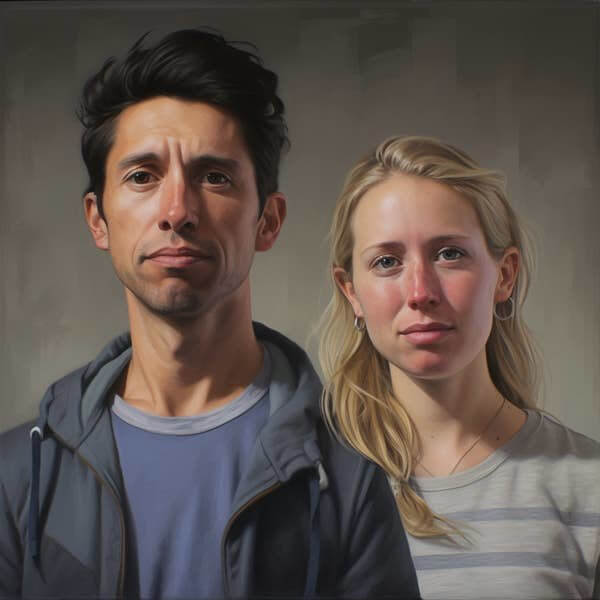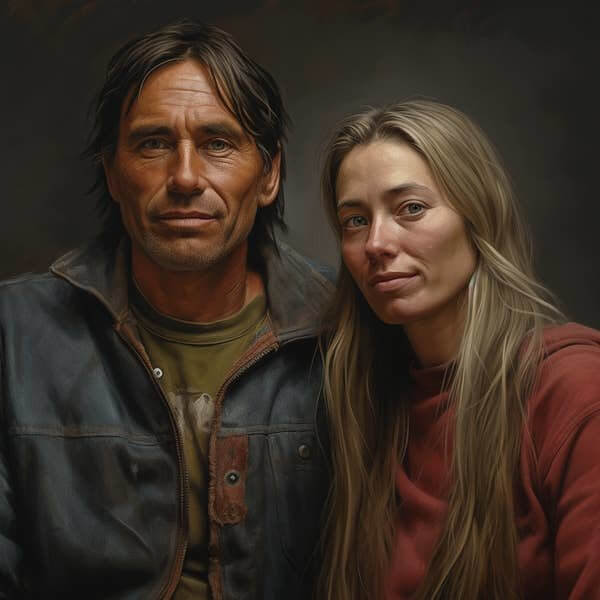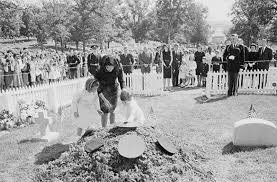 Welcome to an imaginative world where technology and creativity collide in the funniest of ways. One advanced AI model has been tasked with personifying all fifty American states, transforming them into human-like characters based on their distinctive characteristics, historical backgrounds, and cultural vibes. From the sunny surfer persona of California to the cowboy spirit of Texas, it’s time to dive into the true power of Artificial Intelligence.
Welcome to an imaginative world where technology and creativity collide in the funniest of ways. One advanced AI model has been tasked with personifying all fifty American states, transforming them into human-like characters based on their distinctive characteristics, historical backgrounds, and cultural vibes. From the sunny surfer persona of California to the cowboy spirit of Texas, it’s time to dive into the true power of Artificial Intelligence.
Keep reading for an amusing, enlightening tour of the country like never before. I’m sure you’ll find this thoroughly enjoyable!
(Credit to the website Travelrz.com)
Alabama – Meet the Hipster Forest Dweller of States
This AI persona is none other than Alabama, also known as “The Cotton State.” Pictured here is a bearded fellow who seems to have misplaced his razor, sporting a hat- backward, of course, because why follow the norm? He’s a ruggedly charming character, looking like he’s jumped straight out of a country music video. Right under that backward cap are glasses fit for reading. There’s an enchanting backdrop since our Alabamian friend is in the heart of the magical wilderness.
He isn’t the office desk type but rather the outdoorsy individual who wouldn’t be caught dead in a cubicle. No boss or manager could keep this guy chained to a laptop.
Alaska – The Ice Queen With an Arctic Attitude
There’s a new Ice Queen in town. Meet Alaska, “The Last Frontier.” This icy protagonist is youthful, with long, light brown hair flowing with the freedom of the Northern winds. She’s decked out in a hefty Winter coat, the hood of which is dusted with the frosty touch of fresh Alaskan snowfall. The scenery in the background is practically a dream for those living in warmer states, featuring white, pristine mountains.
This lady of the tundra would trade swimming at the beach for a snow-covered landscape any day. A tropical vacation? She’d rather had a dog sled. A desert hike? She’d choose an iceberg.
Arizona – A Tattooed Duo of Tumbleweed Tales
In Arizona, we meet a compelling duo- an-ink decorated, cowboy hat-toting gentleman and a blond woman elegantly dressed in a western-style vest. The man’s tattoo art speaks volumes of years of thrilling narratives and untold stories. His signature cowboy hat and goatee hint at a life spent acquiring a bit of desert knowledge. The woman adds a sparkling contrast with her sunny hair reflecting the warmth of the Arizona sun.
Up against the untouched desert landscape, these two people are perfect embodiments of the state. It’s a snapshot that whispers rich tales and adventures under the endless Arizona sky- and we love it.
Arkansas – A Bit of Flannel and Natural Charm
This down-to-earth couple blends comfort and simplicity that captures the essence of Arkansas, “The Natural State.” The man, casual and warm, is rocking a blue flannel shirt, his hair flowing longer than the Mississippi, which also subtly broadcasts an approachable, laid-back vibe that’s quintessentially Arkansan. The woman, with her long brown hair all the way down to her shoulders, is grounded in a beauty that reflects the state’s natural allure. They’re wearing their ‘average Joe and Jane’ badge with pride.
If there is anything to point out about this couple- the whole “Natural State” thing seems to really work with their natural and welcoming appearances, from their hair to their clothing.
California – Stylish Aviators Under the Sun
This guy is basically a model as he struts around a bright floral shirt with sunflowers, channeling the clinic 60s hippie style that still subtly influences California’s fashion scene. Topping it off are aviator glasses reflecting the state’s 300-plus sunny days a year, and the long blond hair is definitely a tribute to the classic surfer look. All these are as characteristic of California as its tech startups, vineyards, and film studios that everyone in the state knows and loves.
Against sun-soaked skies, majestic mountains, and expansive forests- this man embodies the Golden State’s laid-back vibes. A reminder that the pursuit of chill is just as pretty as the Pacific coastline.
Colorado – The State’s Curly-Haired Winter Queen
The spotlight is now on Colorado- represented by an AI-generated girl with long, dark curls who could win an award for ‘Best Hair in a Snowstorm.” The snowflakes on her curls seem to be having a party of their own. She’s bundled up in a cozy blue turtleneck, probably rated for those extra-chilly Rocky Mountain nights. And speaking of the Rockies, she looks just about ready to explore the 58 mountain peaks that span over the snowy state.
She’s surrounded by pine trees and snow mountains, like a one-woman winter wonderland, giving us a glimpse into life in Colorado, where they don’t just weather the winter- they make it look good.
Connecticut – The Double Duo- More Hip Than Hipsters
This AI-rendered couple represents the state of Connecticut, the “Constitution State.” They’re sporting glasses and an air of casual cool that’d put even the trendiest hipsters to shame. This laid-back pair looks like they’re about to spend a lazy Sunday afternoon cracking open a mystery novel or exploring the nuances of a crossword puzzle. They were their average looks like a badge of honor- because in Connecticut, being comfortably normal just might be a thing of beauty.
They’re standing against a simple background, personifying their state’s quiet charm and intellectual energy. With their easy-going charm, this couple is living proof that in Connecticut, low-key is the way to be.
Delaware – A Couple Keeping It Casual
This adorable AI-generated couple represents Delaware, commonly known as “The First State.” The two, dressed in their comfortable and timeless daily wear, look like they’re pretty much ready for a casual day out exploring. The man has a scruffy beard that would make any millennial proud, coupled with a pair of glasses that lend an intellectual charm. The woman seems pretty approachable. It’s hard to believe these two don’t actually exist in the real world.
Delaware was the first state to join the union, so it’s no wonder that our representative couple appears to be confidently casual- they’re just reflecting a bit of pioneering spirit, the Delaware way.
Florida – The Land of Lizards and Palm Trees
You’ve just entered Florida, the “Sunshine State,” where AI has decided to embrace the local wildlife and manifest it into human form. We’re presented with a character who’s part man, part lizard, and entirely Floridian. From his reptilian eyes to his yellow hat and Summer shirt, he’s got the sun-soaked vibe down to a tee. After all, when you’re in a state that’s almost entirely a beach, why not go full-on sand lizard when you can?
Florida is the flattest state in the U.S., making it the perfect place for lizards. Our scaly friend would have no trouble catching those sunshine rays from just about anywhere.
Georgia – A Peachy Pair of Southern Charm
Here we are, folks; with the AI personification of Georgia, “The Peach State,” manifested as a vibrant young couple. You can practically smell the sweetness by just looking at them, or perhaps it’s just that classic Southern charm seeping through. Their smiles are as fresh as Georgia peach pie and have an aura that’s as inviting as a home-cooked Southern meal. Needless to say, wherever this couple may be, you’re certainly welcome there.
Of course, Georgia is known for much more than just peaches – and if there’s anything to learn from these two, it’s that Georgia is all about hospitality and plenty of charm.
Hawaii – Aloha and Flower Crown Included
If you’re looking for the epitome of “aloha spirit,” look no further than Hawaii’s AI representative. He’s got it all- the long white curls hare, a beard that can make Santa envious, a smile wider than the Waikiki beach, and flowers wrapped around his neck and head. His outfit screams tropical vacation, or native hometown hero, with a demeanor that just about makes you want to hope on a plane just to grab a Mai Tai.
This infectious vibe perfectly encompasses just about everything in Hawaii, which is why people travel from all around the world to get a little bit of the state’s sun and fun.
Idaho – The AI Duo: Potatoes Not Included
Say Hello to Idaho’s AI duo: a down-to-earth couple who basically encompass simplicity and sincerity. Although they might appear as an ordinary pair, don’t let that fool you. They’re as complex and fascinating as the state’s diverse geography. Their personalities seem to match Idaho’s motto, “Let it be perpetual.” Stable, sturdy, and timeless, they’re just like Idaho’s landscapes- beautiful, captivating, and full of surprises that you just might not have been expecting.
Although Idaho is famous for its potatoes, it’s also nicknamed “The Gem State” because nearly every known type of gemstone has been found there- go ahead and do some digging.
Illinois – The Modern Day Lincoln
According to AI, this is a representation of Illinois- a contemporary reincarnation of Honest Abe himself. With wide-eyed wonder, messy hair, and a face that would make any penny proud, this image captures the essence of “The Land of Lincoln” quite perfectly. He’s clearly traded in his stovepipe hat for an air of 21st-century style, but his character seems as strong and steady as the original Abraham Lincoln himself. At least, we surely think so.
Not only is Illinois famous for its deep-dish pizza, but it also happens to be the pumpkin capital of the world- and who doesn’t love pumpkins? Although Abe can speak for himself.
Indiana – Autumn Love in Hoosier Land
This AI human-like version of Indiana features a couple embodying the warm, autumnal spirit of the Hoosier State. Wrapped in layers of cozy clothing and, of course, a pretty, endearing hug, these two are exuding an undeniable energy that feels like the first sip of apple cider on a crisp fall day. Their contagious smiles are wider than the Wabash River, proving that Hoosier hospitality just might be a real thing.
If you were looking for a fun fact – Indiana is way more than cornfields. Just to prove this, we’re going to mention that they have a town called Santa Claus.
Iowa – Cozy Couple of the Corn State
This embodiment of Iowa features a couple that could probably charm a husk off a cornstalk. The man, casually dressed in yellow and blue, has the classic twinkle of wisdom behind those glasses. His white scruffy beard is also probably the epitome of farmer chic. The woman next to him seems to like his perfect counterpart, with a tidy low bun that basically screams practicality. They exude simplicity as if they’ve spent quite some time under blue skies.
You could almost hear the distant mooing of cows in the background and taste the first sip of a gold glass of sweet tea, simply based on this man’s farmer outfit.
Kansas – Oz Reimagined in the Sunflower State
In this AI rendition of Kansas, “The Sunflower State,” we’re offered a classic take on what just might be The Wizard of Oz. This man’s hat looks pretty close to the same one that the Scarecrow wears in the movie. The woman could also easily pass as a modern-day Dorothy, who just might be living a much simpler life than Dorothy herself. We wouldn’t be surprised to hear that these two are growing a few sunflowers out back.
We seem to easily know what this AI generator is thinking in terms of movies when it comes to Kansas, where these two people are an example of the state’s pop culture.
Kentucky – Some Fiery Bluegrass Spirit
These are the famous ‘Bluegrass State’s Ai representatives. Their flaming red hair perfectly mimics the famous fiery spirit of Kentucky, and although their smiles might not be as inviting at first glance, there’s a certain warmth that can’t be missed. While most people think of derby and a good glass of bourbon when referring to the state, these two offer a more classic side- especially when it comes to their preppy sense of style.
There’s no doubt that artificial intelligence did its best to render up a couple of Kentucky locals, and if we’re being honest, it ended up doing a really good job.
Louisiana – A Bit of Bayou and Braids
If Louisiana had a face, this AI-generated image this it right out of the park. The man, appearing every bit the gallant sailor with his weather-beaten cap and a faint hint of the sea in his eyes, screams of the state’s love for waterways. The woman, with her long braided hair, embodies the state’s French influence with a splash of Cajun charm. Their expressions really just mirror everything about “The Pelican State.”
Close your eyes, and you can almost hear the subtle notes of jazz music, the heartbeat of Louisiana, subtly playing in the background with a demeanor as warm as the state itself.
Maine – A Comfy Mariner by the Sea
Has anyone been looking for a sea-based logger to get a job done? We’ve found him. He happens to be generated by artificial intelligence. He’s wearing the sturdy expression of someone who’s just wrestled a moose and came out victorious. This lumberjack-seaman of Maine looks super warm and comfortable in his coat and almost as rugged as the rocky coastline he calls home. Of course, the background is a scenic backdrop of boats in a calm bay.
Moose wrestling aside, this embodiment of Maine’s famous coastline is as inviting as a warm bowl of clam chowder after a chilly day at sea. Just remember to wear a flannel when you visit.
Maryland – The Hipster’s Paradise
These two are wearing outfits that would make the trendiest hipsters wonder where they’ve gotten this style, and you can certainly see why. The overload of edge here is showcasing how Maryland’s spark is found in its perfect blend of sophistication and individuality. You can almost smell the waft of freshly baked blue crab cakes in the air around them. At least, that sounds really good, so we’d certainly like to.
AI knows that Marylanders are proud of the cultural diversity and styles around them, so if your idea of cool goes beyond the clichés, welcome to Maryland – you won’t want to leave.
Massachusetts – The Bay State Blend
This young couple is showing off the blend of old-world charm and cutting-edge innovation that characterizes the Bay State. The man might not be sporting a Boston Red Sox Cap, but it’s not hard to visualize the addition. There might not be anything too extraordinary about the woman that the AI generated, but we’d sure like to be invited to their house for a fine Thanksgiving dinner in “The Bay State.”
Massachusetts is known for successfully merging history with innovation, combining a state of rich history with a brand-new touch. From the cobblestone streets to the high-tech hub, it’s full of surprises.
Michigan – Sweaters Fit for Freezing
AI has brought “The Wolverine State” to life with these two cool Michiganders, giving a friendly nod to the state’s characteristics. The woman, in a cozy sweater, seems like she’s just about ready for Michigan’s famously freezing Winters. Meanwhile, in his jean jacket, this guy is basically throwing it back to the days of Detroit’s wildly known automotive glory. These two AI-generated humans go together just as well as Michigan’s two peninsulas.
Michigan is known for its Great Lakes and even greater hearts, and of course, we can’t skip past the fact that Michigan is basically the capital of cherry pie and kindness.
Minnesota – The Outdoor Enthusiasts
It’s time to meet this Minnesotan couple, the AI-created generation of the “Land of 10,000 Lakes.” The state is represented by a lively duo who have logged more hours in the Great Outdoors than they have on social media. With a practical hat for those midwestern elements, there’s a sense of adventure that’s kind of hard to miss. His female companion is hooked up to suspenders, ready for hiking in the expansive Northwoods.
Minnesota isn’t just about nature and lakes. Sure, it’s home to the headwaters of the Mississippi river, but it’s also a land of folks who value community, tradition, and a solid potluck.
Mississippi – Sun-Soaked and Dirt-Dusted
Representing “The Magnolia State,” we find a man who carries a post-gardening glow and a bit of Mississippi’s fertile land on his shirt. Dressed in a large farming hat and a bandana that hints at a long day’s work, his shirt speckled with the tell-tale signs of honest work- that’s right, those are proud badges of dirt. He’s the epitome of southern grit, hard work, and good old Mississippi perseverance.
Of course, Mississippi’s not all work, though. Known for its magnolia trees and deep blue roots, it’s a state that moves to the rhythm of Blues and a cold glass of tea.
Missouri – The State’s Unmasked Charm
Welcome to “The Show Me State,” brought to you by a bearded fellow and a blonde woman in a causal grey shirt. The man, squinting through his square glasses, wears a mix of curiosity and unmistakable Missouri pride. The woman’s sun-streaked hair works well with a certain kind of down-to-earth elegance that artificial intelligence seems to understand well. Although, these two are surely ready to dive into any adventures that come their way.
Missouri is home to over 6,000 awesome caves and a straight-talk spirit that invites you to explore a bit of hidden treasure and even more beautiful landscapes- the Missouri way.
Montana – Grizzly Bears and Great Views
Let’s take a trip over to Montana, the ‘Big Sky Country,” where mountain peaks reach the clouds, and the land practically stretches out as far as the eye can see. These two are AI’s depictions of the treasure state. The man is almost as rugged as the mountains in his backyard, with long black hair that would make any model jealous. Something about the woman’s natural beauty also amounts to Montana’s natural landscapes.
Although lots of people call Montana home, so do a ton of enormous grizzly bears- that’s because Montana actually has the largest bear population in almost all fifty American states.
Nebraska – Unleashing State Spirit
The “Cornhusker State” isn’t known for just that- while there are vast fields of corn, there are also bustling cities and vibrant college sports culture. Based on that, we’d like to imagine that this AI-generated Nebraskan man wouldn’t mind throwing on a Cornhuskers jersey, echoing the state’s devotion to their college football team.
These easy smiles and welcoming demeanors hint at the genuine friendliness that Nebraskans are known for, flowing just as smoothly as the state itself- since it’s literally filled with rivers.
Nevada – Silver State’s Glitz and Glamor
Utilizing advanced artificial intelligence techniques, a captivating image of a mature woman embodying the essence of Nevada emerged, portraying a striking resemblance to a Burning Man festival attendee. The AI ingeniously captured the vibrant spirit of the state, adorning the woman with eclectic attire and intricate accessories reminiscent of the festival’s artistic essence. She looks like she spent a few days in the desert for sure.
With a touch of ageless allure, her unique features and seasoned expression encapsulate the rich tapestry of Nevada’s history, culture, and desert soul, symbolizing the state’s unconstrained individuality and creative energy.
New Hampshire – The Great Outdoors
This AI representation of New Hampshire looks like a couple of characters who hopped right out of a modern Shakespeare novel if such a thing existed. Standing tall and confident in a pair of glasses, the guy’s giving off a kind of charming intelligence that’s as enduring as the granite state’s known for. The woman is fit and ready for New Hampshire’s incredible Autumn weather with practical outfits that are perfect for the outdoors.
With granite-faced mountains and picturesque lakes as a backdrop at every corner, the state’s general makeup perfectly aligns with the people that artificial intelligence has genuine when thinking of New Hampshire.
New Jersey – Garden State Locals
This is AI’s New Jersey duo, a picture-perfect representation of the state’s blend of style and essence. The man is a mix of laid-back and a bit of Jersey strength, with his backward cap, denim jacket, and lack of a smirk suggesting he’s lived and learned. Artificial intelligence is so smart when it comes to prompts, but there’s no way to know why it generated this woman when thinking of Jersey – but somehow, it works.
These people really do look like they’ve come straight out of the garden state, and hopefully, they’ve made a stop or two at one of New Jersey’s famous vintage diners.
New Mexico – The Enchanted Land
Under the canopy of the vast Southwestern sky, the AI representation of New Mexico stands as a weathered elder, his deep-set eyes filled with countless untold stories. There’s an air of gentle, enduring strength about him, as resilient as the desert landscape he originates from. Framed but the backdrop of a clear sky and endless sand, his spirit and both expansive and quiet- just like the endless stretched of sand dunes throughout the state.
Whether it’s the intensely calm desert or the lure of New Mexico’s capitol, Santa Fe, there’s something about the state has made it earn its name- “The Land of Enchantment.”
New York – Street Style Meets AI
New York is personified as a young man with an unmistakable air of dynamism and style. Fit in the latest street fashion; he epitomizes the vibrant hustle of the city that never sleeps. His stare is just as sharp as the famous skyline, with a stance as confident as a Wall Street broker by day and a partier by night. The iconic Times Square is glowing in the background, emphasizing the city’s never-ending heartbeat.
New York is the most linguistically diverse city in the entire world, and of course, we can’t help but mention the famous .99-cent pizza that you can grab before a Broadway show.
North Carolina – The Land of Pepsi
Here we have North Carolina, a young man with pure enthusiasm. He’s wearing a cap that could easily represent his favorite sports team and, of course, a pair of glasses for football viewing pleasure. North Carolina’s legendary tailgates are a huge part of the sports culture there, and it’s not hard to imagine this man taking part in them. He could be any guy from North Carolina, cheering from the stands on a Saturday afternoon.
Since North Carolina created Pepsi soda, we’re assuming that this AI embodiment of the state wouldn’t mind cracking open a cold one on Super Bowl Sunday – or any other day, really.
North Dakota – Prairies and Ploughs
North Dakota is known as “The Sioux State,” and it’s represented by a hardworking couple standing tall in front of golden grain fields and a setting sun. With her dark hair tied in a practical bun, the woman has a sense of quiet determination. The man, his hair darkened by the sun, has a weather-beaten resilience that reflects the spirit of North Dakota’s agriculturists. Their earth-stained clothing tells a story of long days in the fields.
But North Dakota isn’t only about farming; it’s home to rich Native American heritage and is home to America’s geographical center, from which it gets its nickname “The Sioux State.”
Ohio – Flannels and Family Roots
Welcome to Ohio, the Buckeye State, represented by a man who looks like he could chop a tree up in a single swing while also being proud of his heritage. His straw hat and flannel shirt are as authentically midwestern as a field of corn under a bright blue sky. The full beard adds a touch of ruggedness that complements those blue jeans. His eyes, though, hold a spark of friendliness that reflects the warmth of Ohio’s family-loving community.
And that Buckeye nickname? It actually comes from the state’s many buckeye trees. Apparently, those trees represent good luck, so if you’re running low – it’s time to head over to Ohio.
Oklahoma – Better Sooner Than Never
These guys are standing tall, representing “The Sooner State” that we all know and love. These two are embodying the rich history of their ancestors in the modern world. The man’s blue denim button-up shirt provides a touch of Americana, paying tribute to the cowboy and agricultural heritage that intertwines with Oklahoma’s native roots. The expressions on their faces are almost as steady and open as the state’s rolling prairies and endless country pride.
Tornadoes might come to mind when you think of Oklahoma – but there is, in fact, a whole lot more going on there. It even got its nickname from settlers who claimed the land.
Oregon – Always Ready for Rain
“The Beaver State” out in the Pacific North West of the country seems to have a representative that matches well with the rainy weather. He’s a rugged, older gentleman with a classic yellow rain hat and a bright orange coat. The brightness of his outfit is a nice contrast to the often misty Oregon climate, his white beard perfect enough to catch droplets from the never-ending drizzle that continually sets the mood.
Pennsylvania – A Youthful Legacy
Like the Liberty Bell’s ring, this AI generation of “The Keystone State” presents a young couple who seem to carry an aura of the state’s rich heritage. The man sport’s a beat, perhaps a note to Pennsylvania’s famous communities, while the woman’s smile represents the state’s welcoming spirit. Their attire blends casual modern with subtle hints of historical Pennsylvania style, seemingly borrowed from images of bustling markets in Pittsburgh or laid-back afternoons.
Around these two people, invisible but implied, are the state’s urban energy and serene countryside. From revolutionary history and forward-thinking – Pennsylvania is the birthplace of the United States, after all.
Rhode Island – The Salty State
We’ve reached ‘The Ocean State,” Rhode Island, with a laid-back man and woman who carry some salt-kissed energy. The AI has painted them with tousled hair, sun-kissed skin, and casual clothing, bearing witness to countless afternoons spent by the lapping waves of the coast. Their relaxed postures and typical of the state’s calming coastal charm, with a sturdy stance that suggests a pleasing familiarity with the harshness of the Atlantic Ocean.
It’s easy to picture one of Rhode Island’s stunning coastlines in the background- and that’s undoubtedly one of the first things that comes to mind. Despite its compact size – it’s all heart.
South Carolina – All Sand and Sun
South Carolina, effectively known as “The Palmetto State,” is a vibrant couple who just might have claimed every one of the state’s beaches as their personal backyard. Their windswept hair speaks to countless hours spent basking in the glow of South Carolina’s generous sunshine. Their attire can undoubtedly be considered country casual, mirroring the relaxed atmosphere. The only thing missing is a picture-perfect beach backdrop of sand and surf – a distinctive feature of the state.
From a great love of football to the proud declaration of being the first to secede from the Union – people in South Carolina have a kind of pride that is hard to match.
South Dakota – More Than Mount Rushmore
South Dakota, also known as “The Mount Rushmore State,” is represented by a rugged couple who are as sturdy and enduring as the state’s geological wonders. It’s easy to picture their hiking gear, layered for the notorious Dakota weather wings, and well-worn boots, suggesting countless treks across the Black Hills and Badlands. Their faces are lined with the elements, with a communicative resilience that is definitely needed in order to thrive in South Dakota’s wild weather.
South Dakota is famous for Mount Rushmore and its endless amount of caves and exploration, reminding us that the state truly is home to a remarkable tribute to American leadership.
Tennessee – The State’s Musical Melody
Tennessee is commonly known as “The Volunteer State,” brought to life by a couple who have a certain level of rhythm and warmth that’s widely associated with the southern gem. Dressed in denim, minus an instrument case over their shoulders, it’s almost like these two have just stepped off a stage in Nashville or Memphis. Their grinning faces reflect the joy of a well-played tune and the love of a community bonded by music and shared heritage.
There might as well be neon signs in this picture, with a Taylor Swift song in the background, promising a night of unforgettable entertainment and music that’s practically the heart and soul of Tennessee.
Texas – A Cowboy Keeping It Real
This is “The Lone Star State’s” representative- a man straight out of a Western movie scene. Donned in a sun-faded cowboy hat that has seen many Texas sunsets, well-worn clothing, and (probably) a set of leather boots, he’s a perfect representation of the rugged charm of Texas. The only thing he’s missing is a thick handlebar mustache and a few Texas tales that have been passed through the generations to this state-loving cowboy.
Although this cowboy’s demeanor is cool and casual, he’s certainly wearing a pride for his homeland. The background here might as well be a sprawling desert with an endless amount of cacti.
Utah – Endless Rugged Adventure
This outdoorsy guy has a personality as diverse as the landscape here- and he’s representing Utah in all of its glory. His hair and beard are pretty wild, matching the untamed beauty of the state’s terrain. The dirt smudges are echoing many days spent exploring Utah’s arches and canyons. Of course, his eyes are almost as bright as the clear blue of Utah’s skies, with a sunburn that’s representative of the state’s warm desert climate.
Behind him, Utah’s terrains stretch into the horizon, with red rock formations, rolling hills, and even distant snowy peaks that make up all five of Utah’s incredibly beautiful national parks.
Vermont – Hot Tea and Warm Smiles
This AI-generated pair is a couple of Vermonters who are bundled up for the state’s notorious winters. They’re rocking cozy-looking sweaters and woolen coats with a vintage charm that fits right in with Vermont’s small-town spirit. They’re a picture of winter warmth- you can practically hear the crunch of the snow underneath their boots. One thing’s for sure- they’re enjoying the vibrant reds of Vermont’s fall foliage that’s almost as sweet as the state’s famous maple syrup.
The green backdrop just might be hinting at the state’s nickname – “The Green Mountain State.” Known for its stunning landscapes, it’s a safe haven for hikers and nature lovers alike.
Virginia – The Backdrop of America
Meet Virginia’s AI-generate representation- a pair of young, fresh-faced folks who perfectly embody the state’s youthful energy and timeless appeal. These two have a casual vibe and attire, just like Virginia itself, which strikes a perfect balance between both comfortable and classy everywhere you go. Against a muted grey background, this couple shines bright, like Virginia’s rich history and cultural legacy that firmly stands out in the backdrop of America.
Virginia is known as “The Old Dominion” because of its status as the first English colonial possession in North America, which means there’s a plethora of historic sights and iconic monuments.
Washington – An Evergreen Man
This man, with a curly head of hair and a scruffy beard, perfectly captures the spirit of the untamed “Evergreen State.” The nickname quickly describes the geography, and his weather-appropriate coat could certainly handle any downpour. He’s wearing a style that’s as adaptable as the Washington weather itself that singles a hint of adventure and many days exploring the great outdoors. This perfect persona certainly mirrors the earthy character of Washington.
The landscapes in Washington feature everything from rainy forests to grand mountains. Despite being home to major tech industries, the state fosters a deep love for everything related to nature.
West Virginia – Flannel and Fall Foliage
Meet West Virginia, or should we say, meet our AI-generated embodiment of “The Mountain State.” With his plaid flannel, hefty denim, and hunting cap, this character is dressed like he was born and raised among the rolling hills and rippling rivers of this Appalachian region. The background boasts an abundance of fiery fall colors- perfectly capturing the essence of a beautiful fall in West Virginia. It’s very much a yearly thing.
This man’s rugged outfit is more than just an aesthetic choice; it speaks volumes about the state’s love for outdoor activities- hunting, fishing, hiking, you name it- they do it.
Wisconsin – For Dairy Lovers
Here’s Wisconsin, represented a young couple who have potentially taken advantage of “America’s Dairyland” and all of its milky glory. Whether it’s cheese, milk, or a good homemade ice cream- it’s hard to think of the state without a good Swiss cheese coming to mind. These two look like they’ve run the mill a few times and might even have a farm of their very own. Yes, we’re very jealous.
Although Wisconsin has to be known for things that don’t always involve cheese, they do produce almost half of America’s cheese products from there – so we had to point it out.
Wyoming – Cowboys and Endless Skies
It’s time to saddle up for an AI rendition of Wyoming, featuring a tireless duo sporting well-worn cowboy hats and sun-beaten leather jackets. Their gaze is as steadfast as the Wyoming wing, their smiles as warm as the setting sun over the prairie. They might not be standing against the expansive Wyoming sky, but there’s a spirit here that is typical of “The Equality State.” – with Yellowstone National Park included.
These outfits are a homage to Wyoming’ deeply rooted cowboy culture. As “The Equality State,” Wyoming blazed trails by being the first to grant women the right to vote in elections.
Washington D. C. – The Capitol
Stepping onto the scene with a sense of style, this AI version of Washington D.C. simply makes sense. Wearing slick aviator sunglasses and a vibrantly yellow T-shirt with the American flag, he’s rocking a charismatic blend of patriotism and effortless cool. With the iconic and recognizable capitol in the background, the generated scene manages to perfectly capture the mix of history, power, and energy that expands throughout the nation’s capital.
This guy’s clothing strikes a huge contrast with the city’s formal reputation. His cool attitude points towards the city’s dynamic, fast-paced environment- a place where change happens, and history is made.
Dyingwords Followers: Which one do you like best? Vote for your favorite by leaving it in the comment box. And, yes, it’s okay to vote for your home state.



































































